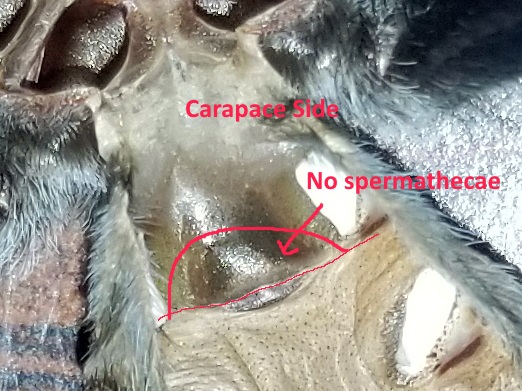Bradshaw
Arachnopeon
- Joined
- Jun 14, 2017
- Messages
- 0
Usually about when its big enough for the spermethecae (sorry about that probable crap job on spelling) to be clearly visible. Get a microscope and you dont have to wait as long. I have no idea what to look for, though.About what size can you reliably sex a C cyaneopubescens by molt? I know vent sex can be a crap shoot, but I assume vent sexing gets a little easier to guess around the same age as well? But I'm still learning so I don't actually know
From 1.5" up for moult sexing (smaller if you have a good microscope and know what you're doing but the main obstacle is untangling the abdomen to get a look without tearing it), vent sexing can be done by eye from 2" up if you know what to look for (depending on species, some are notoriously difficult to sex this way).About what size can you reliably sex a C cyaneopubescens by molt? I know vent sex can be a crap shoot, but I assume vent sexing gets a little easier to guess around the same age as well? But I'm still learning so I don't actually know
I was able to sex my male at 2.25".About what size can you reliably sex a C cyaneopubescens by molt?
It's not hard once you do a few.Usually about when its big enough for the spermethecae (sorry about that probable crap job on spelling) to be clearly visible. Get a microscope and you dont have to wait as long. I have no idea what to look for, though.

